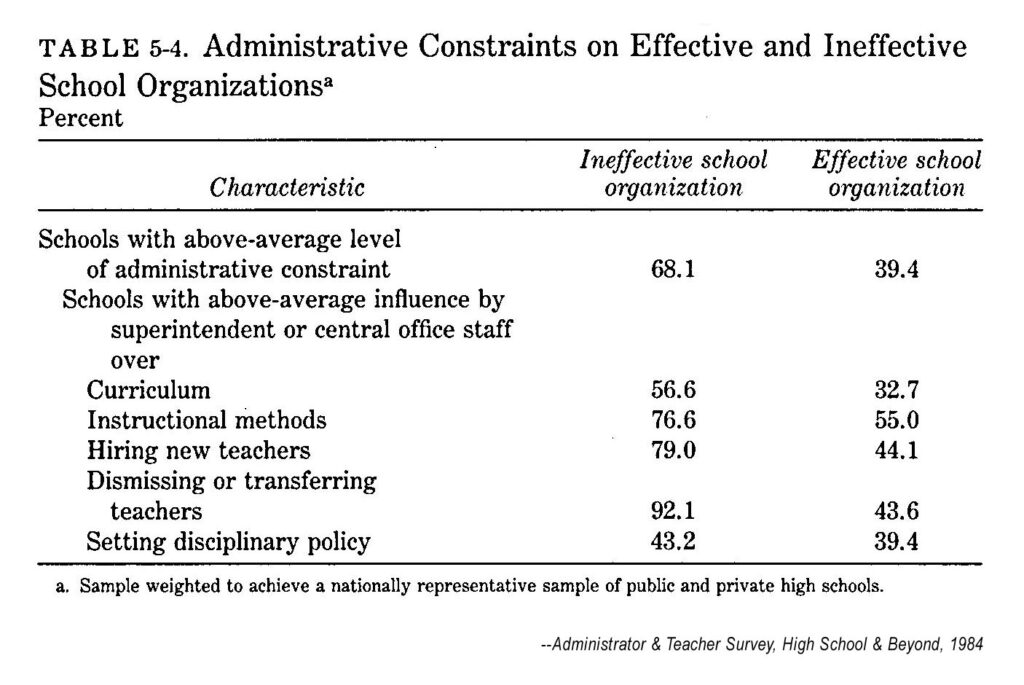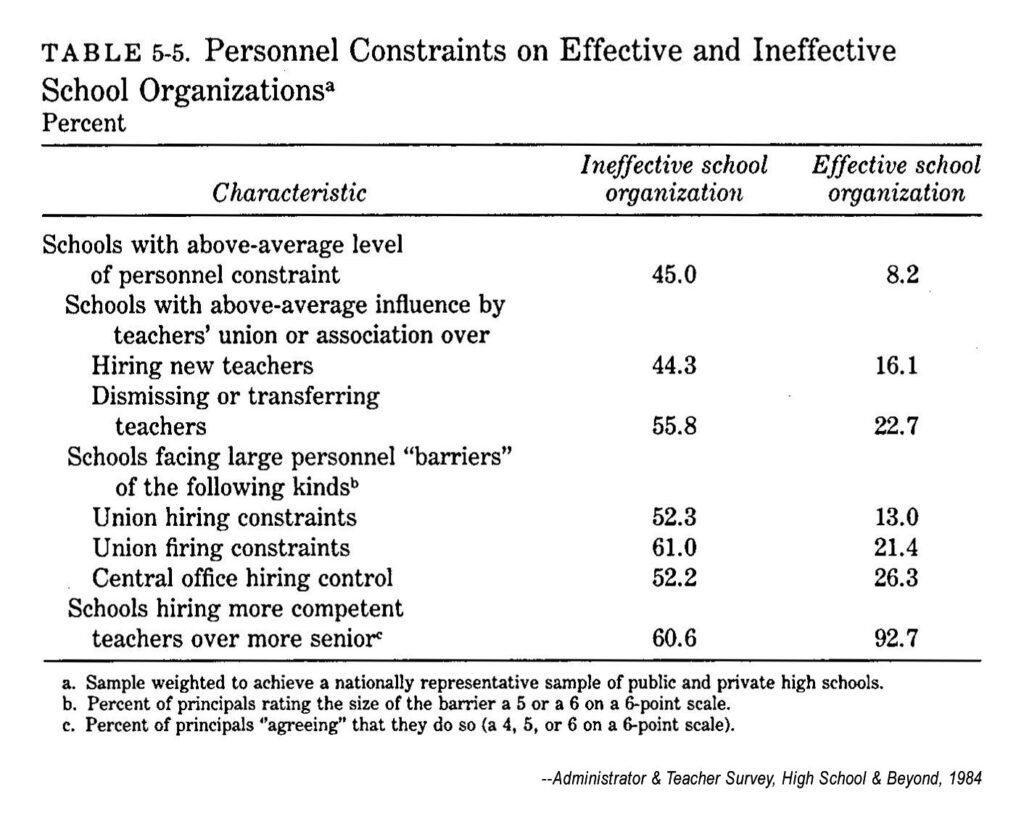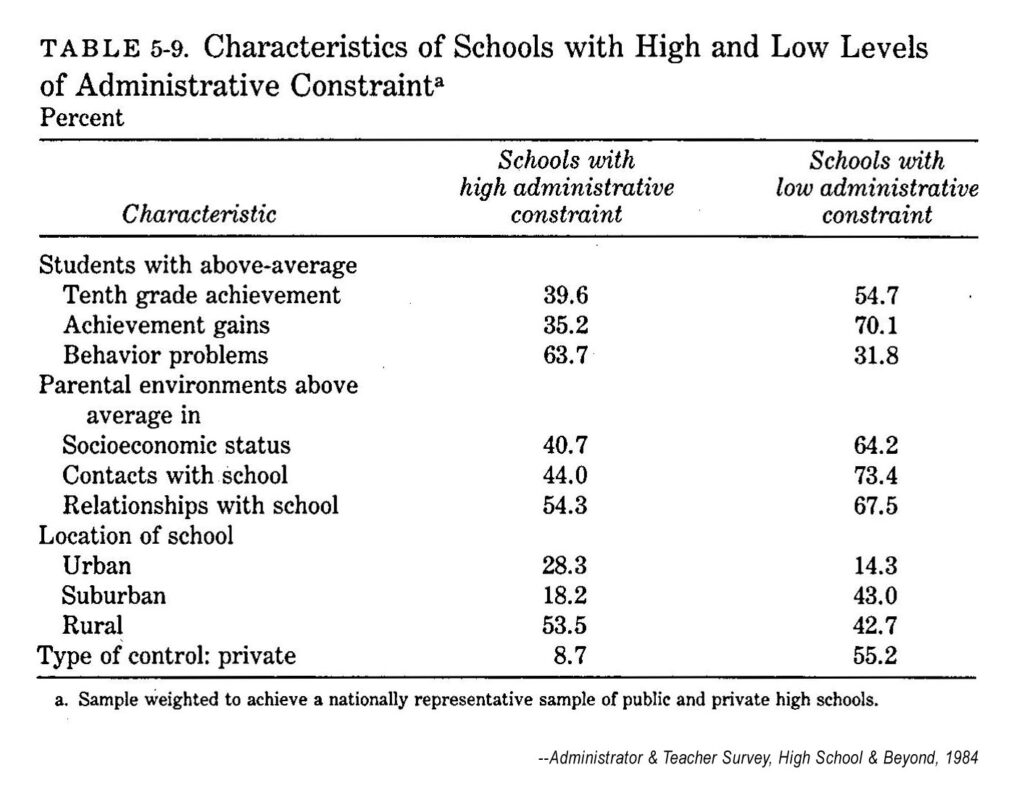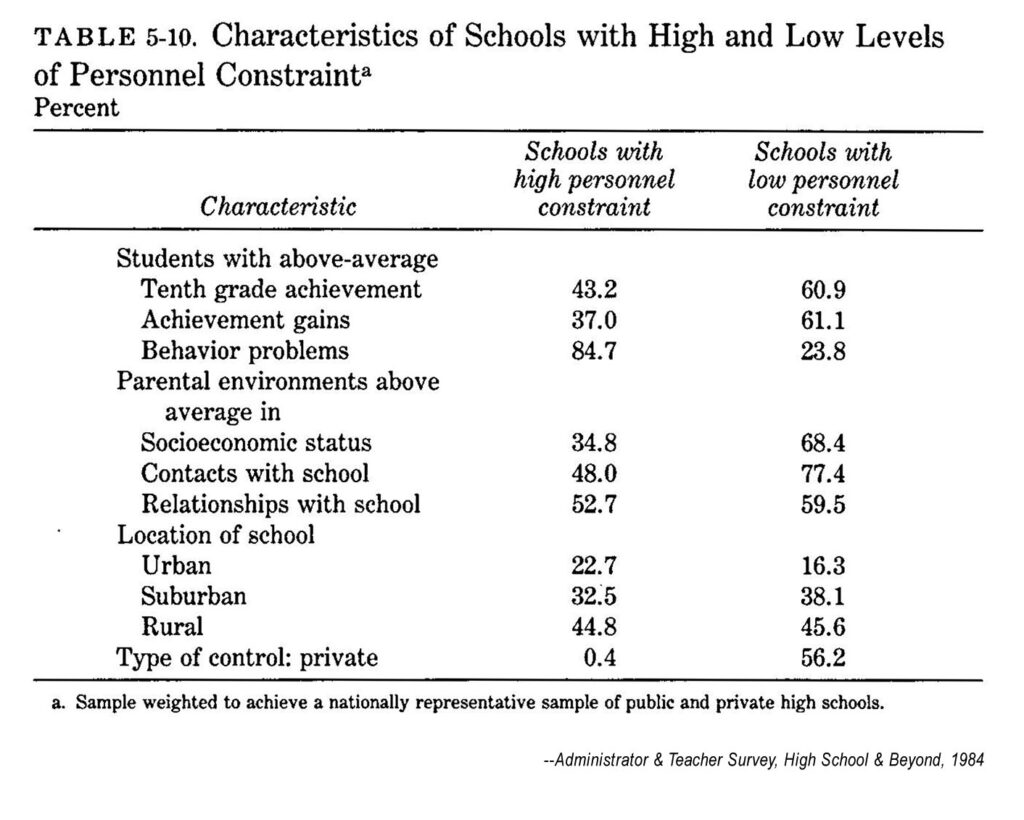The ground-breaking Administrator and Teacher Survey (ATS)
The conclusive research on school effectiveness that makes this clear was conducted in the 1980s and is known as the Administrator and Teacher Survey questionnaire. Its results appeared in book form as Politics, Markets & America’s Schools — which was published in 1990 by the Brookings Institution. The then-president of Brookings, Bruce K. MacLaury, wrote the foreword.
The ATS consortium’s research team had started with the data compiled by famed James-Coleman-administered High School and Beyond (HS&B) reports, and then dug even deeper. The researchers had the intelligence to break the school-achievement results found earlier by HS&B into four quartiles, ranking them highest-achieveing to lowest.
Then, from the schools in the top and bottom achievement quartiles, approximately 17,000 administrators and teachers were recruited to participate anonymously in the survey, answering its questions.
The researchers’ goal was to identify the actual conditions that allow teachers and administrators to operate most effectively in support of genuine student achievement.
Consequently, the 1990 book by Chubbs and Moe was able to report multiple highly enlightening empirical findings — many of which are presented in chart form.
While the entire book is highly illuminating, the four charts below conclusively show the extremely high correlation between above-average administrative control over administrators and teachers with the ineffectiveness of school organizations.


Similarly, schools marked by above-average administrative control are also marked by significantly lower student achievement:


It has been argued that the large correlations shown between administrative restraint and school failure could result from already-failing schools being subsequently placed under increased constraints on both their administrators and teachers. That argument fails, however, when confronted with the actual history of American education — specifically, its capture early in the 20th Century by the ideology of “Progressivism,” with its essentially collectivist hostility to American individualism (as well as to the individuality of American children).
Successfully harnessing the American public’s distaste with the big-city, Boss-Tweed-type political machines that had captured public-school spending in multiple big cities, Progressives then used that support to impose an essentially statist approach on public education that that today is even more politically corrupt and widespread than that of the Tweed era.
Infatuated with the Prussian education model — with its broad, well-paved avenues for politicized state control, and thus more power for various business and academic elites connected to the state — so-called progressives essentially pocketed American public education and deprived most parents of control over the education their children received.
